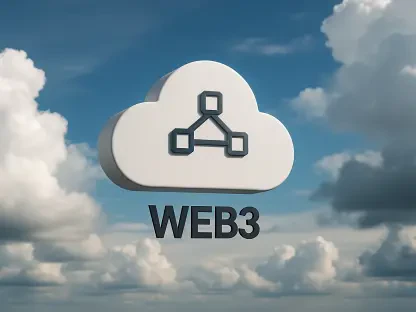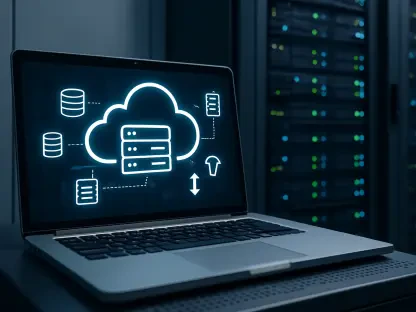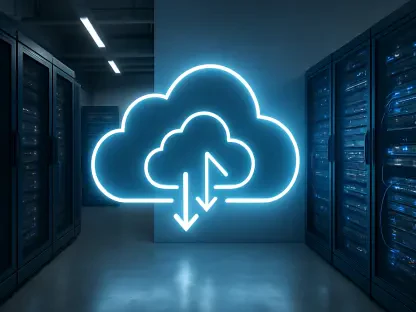Current trends indicate that businesses are facing increased pressure to align their IT operations with sustainable practices. Despite this, a study reveals that a mere 21% of companies effectively use technology to meet sustainability objectives, even though 84% view these goals as strategically vital. This striking gap between aims and actions highlights the challenges companies face in turning sustainability ambitions into reality. For organizations worldwide, the question remains: how can their IT departments be made more sustainable while also keeping pace with innovation and efficiency?
Overcoming Barriers to Sustainability
Navigating Regulatory Changes in IT
Forrester Research identifies several significant obstacles to achieving sustainability in the tech industry, including a lack of skills, executive ownership, and specific IT carbon reduction targets. However, the landscape is anticipated to change swiftly with the introduction of new environmental, social, and governance (ESG) regulations. For example, the UK Sustainability Reporting Standard (UK SRS) and the EU Corporate Sustainability Reporting Directive (CSRD) are expected to shape business practices considerably in the near future. These regulatory pressures seem poised to drive companies toward adopting more sustainable IT practices, demanding a rapid adaptation in strategies and operations.
With regulatory changes on the horizon, organizations are urged to reassess their sustainability goals critically and devise strategic action plans. The newly established guidelines require businesses to enhance their reporting practices, ensuring transparency and accountability in environmental efforts. This push not only incentivizes better compliance with legal standards but also drives positive change from a reputational standpoint. As organizations adjust to these regulations, they will not only uphold compliance but also gain a competitive edge by demonstrating leadership in sustainability. Planning ahead for these inevitable regulatory shifts can position a business favorably in the broader market.
Understanding the Greenhouse Gas Protocol
Comprehending the Greenhouse Gas (GHG) Protocol’s three emission scopes is fundamental in setting effective IT sustainability goals. These scopes offer a structured approach to identifying responsibility and ownership within an organization. Scope 1 covers direct emissions from company-owned sources, Scope 2 pertains to indirect emissions from purchased electricity, and Scope 3 involves all other indirect emissions, forming the bulk of an IT operation’s carbon footprint. By understanding these scopes, IT leaders can craft effective strategies to reduce emissions and prioritize initiatives to minimize their environmental impact effectively.
Implementing strategies that address these emission scopes is crucial, especially focusing on Scope 3, which often represents the largest share of an IT operation’s carbon footprint. An in-depth examination of these scopes allows organizations to identify the most significant contributors to their emissions, offering clarity and guidance in formulating targeted plans. Employing methodologies such as application-level emissions analysis and enhancing procurement processes regarding sustainability can significantly help in attaining these goals. By tackling these elements, businesses can spark actionable dialogues across teams and encourage collaborative solutions for sustainability.
Cultivating Sustainable IT Practices
Aiming for Continuous Improvement
Organizations embarking on sustainable IT practices should embrace a culture that values continuous improvement over immediate perfection. Engaging various stakeholders in discussions about technical optimization helps identify smaller projects that deliver valuable insights into sustainable IT while also driving business growth. Such projects may serve as a foundation for larger, more comprehensive initiatives, as they highlight the areas where advanced sustainable technologies can be integrated with business operations.
The approach of incremental improvement fosters a corporate culture where sustainable practices are seen not as a burden but as an opportunity. By celebrating small wins and achievable goals, organizations encourage a mindset open to experimentation and learning. This positive reinforcement strengthens morale and commitment to sustainability initiatives, driving further innovative solutions. Additionally, this culture can empower employees to think critically about business processes, increasing operational resilience while reducing environmental impact.
Leveraging IT as a Business Opportunity
Viewing sustainable IT practices as a tangible business opportunity can yield substantial benefits, encompassing enhanced energy efficiency and increased revenue through circular economy models. As sustainability considerations inch towards becoming a vital factor in IT procurement, businesses are finding this approach increasingly beneficial. It certainly reduces costs, fosters employee engagement, and improves brand reputation. This shift aligns with the growing trend of including environmental factors in requests for proposals (RFPs) as part of sustainable procurement practices.
In this context, viewing sustainability as an opportunity extends beyond mere compliance with regulations, serving as a strategy to drive business value. By leveraging IT to achieve sustainability goals, organizations can experience tangible improvements in operational efficiency and profitability. By adopting circular economic practices, organizations ponder resource usage differently, prompting investments in more sustainable alternatives. Suppliers and vendors that align with these values are more likely to enter into partnerships, creating an ecosystem that encourages the shared goal of sustainability.
Practical Strategies for IT Sustainability
Enhancing Energy Efficiency and Infrastructure
To commence their sustainability journey, businesses should focus on straightforward strategies, such as improving energy efficiency and optimizing infrastructure. Many companies are investing significantly in cloud infrastructure over the next few years to increase efficiency while considering data management and application architecture enhancements. By refining these technological aspects, businesses gain an edge in operational effectiveness while aligning their activities with sustainable practices.
When integrated into daily operations, these strategies lead to more sustainable IT frameworks that are better equipped to handle future challenges. By upgrading to cloud-based systems, companies can manage resources more effectively, resulting in lower energy consumption and decreased operational costs. Moreover, a focus on data management ensures that vital resources are being appropriately utilized, providing greater insights and fostering informed decision-making. Emphasizing infrastructure optimization propels organizations toward greater sustainability while also providing them with the agility to adapt to future advancements.
Implementing Circular IT Practices
Circular IT practices present another pathway for sustainability, encouraging the reassessment of IT equipment life cycles and promoting hardware that can endure multiple upgrades, thereby reducing waste and optimizing resource utilization. This approach necessitates collaboration with hardware vendors who embrace circular design principles and employ recyclable materials. Establishing a robust recycling network and secure decommissioning plan for IT assets is essential to maximizing value return from assets while ensuring environmentally responsible disposal at their end of life.
Beyond environmental benefits, circular IT practices improve business outcomes by minimizing resource costs and creating a supply chain with reduced environmental impact. Adopting models like “Anything/Everything as a Service” (XaaS) facilitates integrating circular practices, incorporating asset decommissioning, and using trade-ins to offset new equipment expenses. These efforts refine organizational sustainability practices, presenting opportunities to reduce carbon footprint and layoffs while optimizing IT investments. Addressing lifecycle management and end-of-life asset processing is paramount in adapting to the circular economy model.
Educating and Empowering IT Teams
Role of Education in IT Sustainability
Education and training are essential in transitioning to sustainable IT operations, ensuring IT teams have the necessary knowledge to support sustainability objectives. Online resources and workshops provided by organizations like the Green Web Foundation empower IT staff to integrate sustainable practices into daily activities. Training opportunities focusing on carbon-aware computing create a knowledgeable workforce ready to expertly handle sustainable initiatives.
Incorporating these educational programs into professional development plans signifies a commitment to sustainability and reflects dedication to staff growth. Practical training equips employees with problem-solving capabilities, promoting innovation, and fostering an adaptive work environment able to efficiently address environmental challenges. As employees gain skills in sustainability, organizations can garner benefits in areas like reduced operational costs, enhanced decision-making processes, and positioning as leaders in sustainable innovation.
The Importance of Certifications and Standards
Certifications and standards provide frameworks for structuring sustainable IT approaches, serving as references for organizations aiming to enhance their sustainability strategies. Recent developments in standards such as ISO 21031, the Green Software Foundation’s Impact Framework, and W3C’s Web Sustainability Guidelines offer valuable resources for aligning IT operations with sustainable practices. Organizations can build credibility and demonstrate their commitment to sustainability, ensuring protocols are followed to meet industry standards.
Incorporating recognized standards and certifications guides organizations in implementing robust and consistent processes that benefit from shared expertise and best practices. The strategic deployment of these frameworks aids businesses in maintaining competitive advantages, aligning operational excellence with sustainability goals. As firms continue to adapt to a rapidly changing landscape, emphasizing standards demonstrates foresight and prepares them to tackle future environmental challenges effectively.
Future Considerations for Sustainable IT
Understanding AI’s Environmental Impact
The growing awareness of artificial intelligence’s (AI) operational demands highlights the need for sustainable approaches to AI usage. With a focus on concepts like ‘frugal AI,’ there is an increased emphasis on necessity and efficiency, prioritizing smaller but robust, high-quality models. AI data centers, known for considerable energy and water consumption, necessitate methodological shifts to ensure sustainability in AI initiatives.
Addressing these concerns involves reimagining AI models to prioritize efficiency without sacrificing performance. Innovative approaches to AI development prioritize resource optimization and provide solutions that contribute to sustainability objectives. Additionally, awareness of sustainability metrics beyond carbon emissions, including resource consumption, broadens the scope of sustainability conversation. Thoughtful consideration of these factors encourages organizations to adopt responsible AI practices that minimize environmental impact.
Taking Immediate Action for Long-Term Benefits
Businesses today face significant pressure to integrate sustainable practices into their IT operations. Current trends underscore this necessity, yet a study highlights a concerning disparity: only 21% of firms successfully employ technology to meet their sustainability targets, despite the fact that 84% consider these goals crucial to their strategic initiatives. This pronounced gap between aspirations and actual execution exposes the hurdles that many organizations encounter as they attempt to translate sustainability ambitions into tangible, actionable realities. Companies globally grapple with the pressing challenge: how can their IT departments be restructured to not only embrace sustainability but also keep pace with the demands for innovation and efficiency? It calls for a balance, where technological progress aligns seamlessly with environmental responsibility. Achieving this equilibrium is critical for advancing both corporate sustainability agendas and broader ecological goals, vital for the well-being of future generations.









